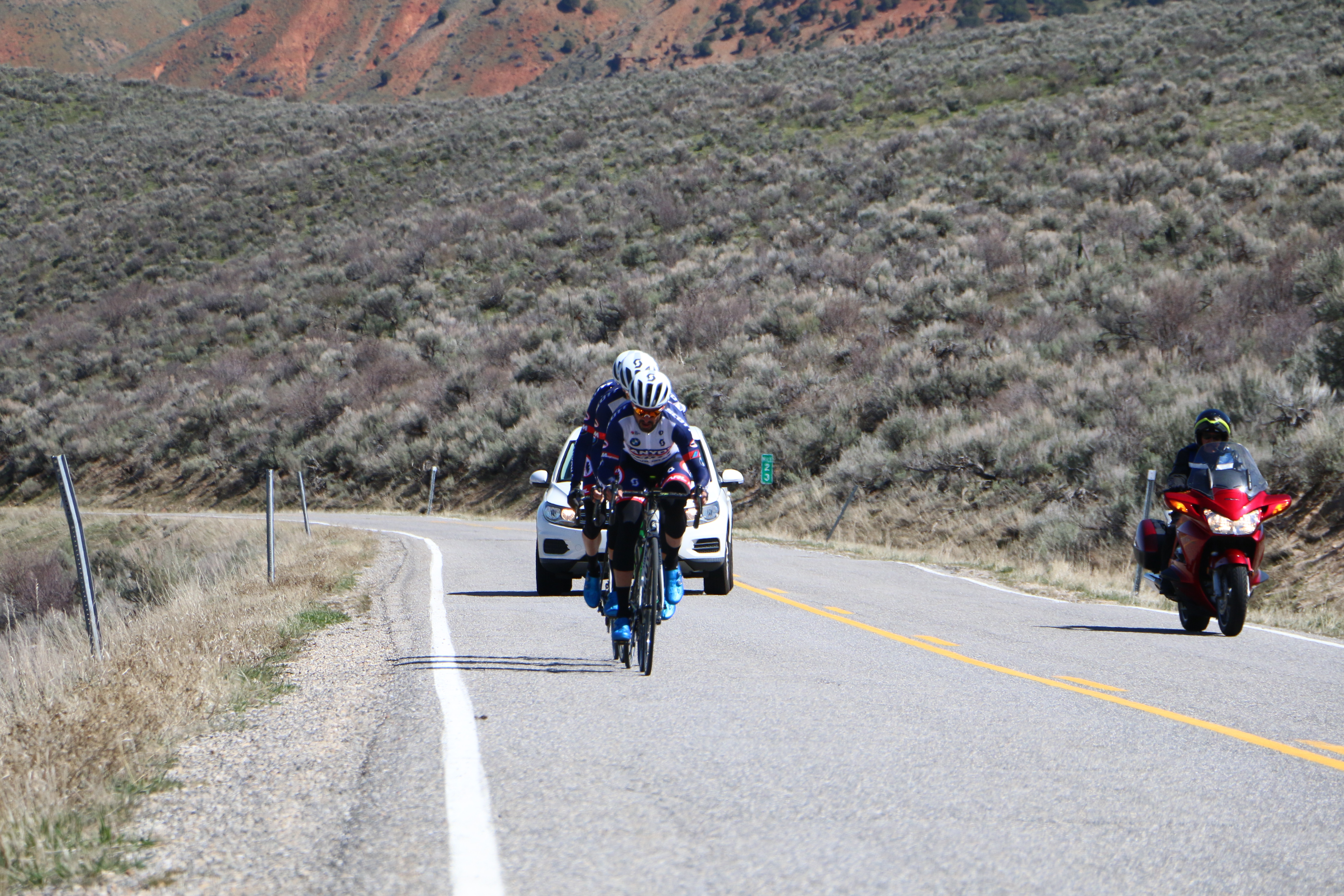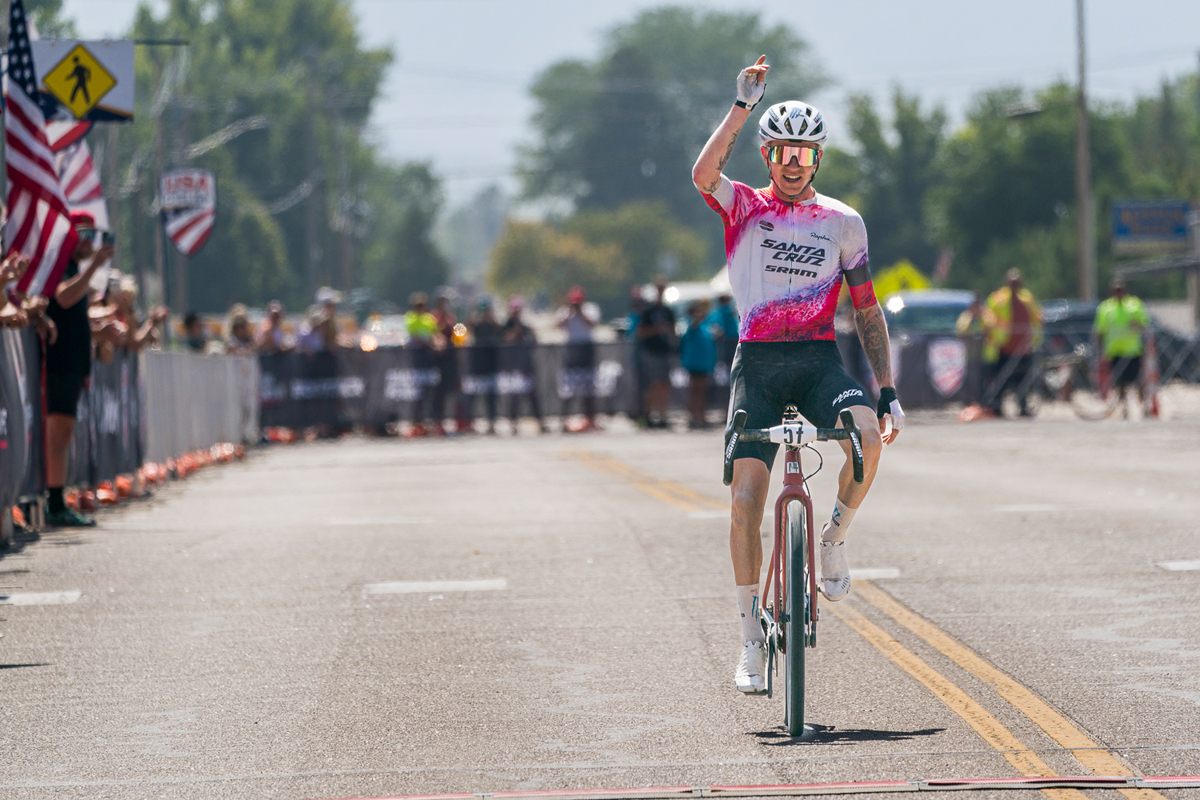ROUBAIX, France (April 13, 2025) — On the hallowed velodrome of Roubaix, where cycling legends are immortalized one cobbled conquest at a time, Mathieu van der Poel etched his name deeper into the sport’s granite foundation. With a thunderous solo victory in the 122nd edition of Paris-Roubaix, the Dutchman claimed his third consecutive title in the Hell of the North, becoming only the third rider in history to achieve such a feat, following the long shadows of Octave Lapize (1909–1911) and Francesco Moser (1978–1980).
This was no routine win, no coronation on cruise control. It was a war of attrition fought over 259.2 brutal kilometers and 30 vicious pavé sectors. It was a duel for the ages with Tadej Pogačar — the Tour de France champion making his debut in this cobblestone crucible — and a masterclass of tactical precision and raw power from Van der Poel.
The Battle Begins: A Calm Before the Storm
Under brooding grey skies, 175 riders rolled out of Compiègne at 11:25 a.m., girding themselves for a battle where luck and legs wrestle for supremacy. The overnight rain didn’t turn the course into a mudfest, but it left just enough slipperiness to add jeopardy to every corner.
The early breakaway formed after 22 kilometers, with a blend of promising names and lesser-known warriors: Kim Heiduk, Oier Lazkano, Markus Hoelgaard, Jonas Rutsch, Max Walker, Jasper De Buyst, Rory Townsend, and Abram Stockman. They were granted a modest lead of just over three minutes, a gap that the peloton — warily shepherded by Ineos Grenadiers — never let off the leash.
But mechanical chaos was already in motion. Filippo Ganna, Ineos’ spearhead, suffered a mechanical that cost him over 30 kilometers of chasing. Joining his misfortune were Jasper Philipsen and Dylan van Baarle, victims of various early issues that forced a hard chase just to get back into contention.
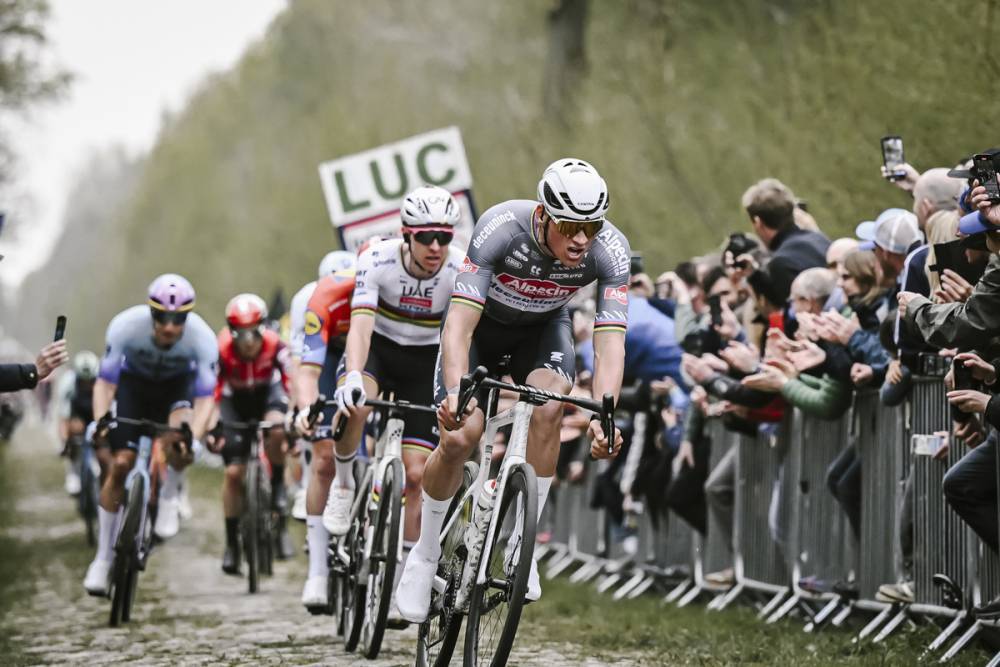
The Screws Tighten: The Arenberg Inferno
It was around the Haveluy to Wallers sector that the race’s real script began to unfold. Lidl-Trek’s Mads Pedersen launched the first real attack, joined instantly by Van der Poel and Pogačar. The peloton shattered like glass behind them.
Then came the iconic Trouée d’Arenberg. The famed five-star sector claimed no mercy, with the trio of Van der Poel, Pogačar, and Pedersen charging like warhorses into its forested hell. The early break was reeled in, and the real protagonists emerged.
The decisive moment, however, came just kilometers later. At Wallers to Hélesmes, Van der Poel turned the screw and forced a split that would define the race. Only a select five survived: Pogačar, Pedersen, Philipsen, and Stefan Bissegger clung on — but barely.
“It was not a planned move,” Van der Poel later revealed. “The legs felt good, and I knew there was a headwind coming later. It felt like the right time.”
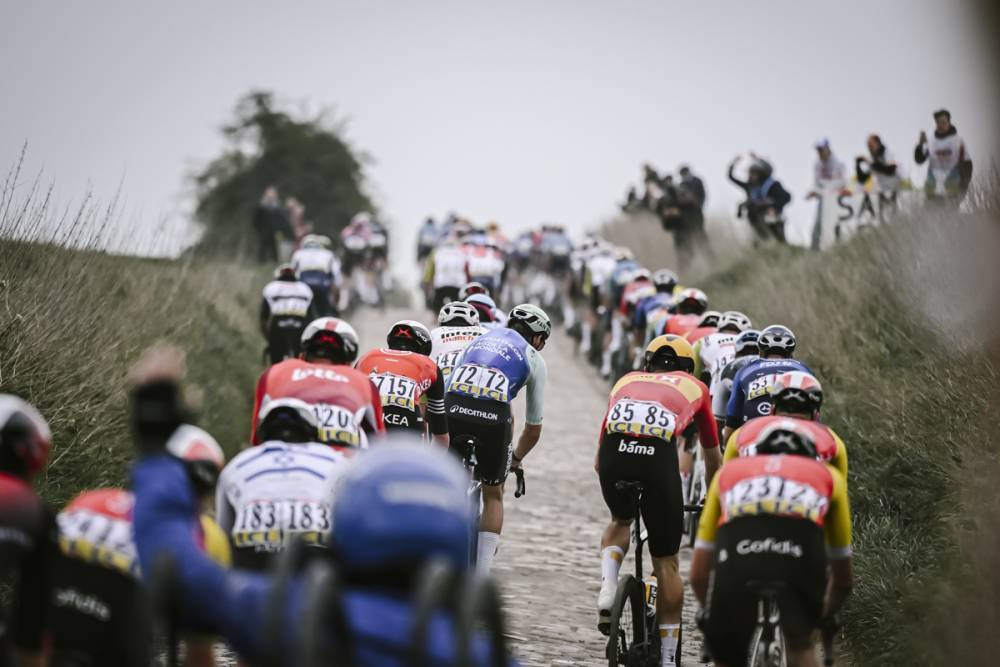
Whittled Down to Two: Pedersen and Bissegger Drop, the Duel Begins
Punctures began to hit like shrapnel. Pedersen fell victim first at Tilloy to Sars-et-Rosières, and Bissegger followed shortly after. That left Van der Poel, Pogačar, and a resilient Philipsen at the front.
What followed was a tactical ballet. The trio worked in synchrony, preserving their lead, until the five-star sector of Mons-en-Pévèle cracked the equilibrium. Van der Poel surged, and Pogačar used the opportunity to unglue Philipsen, setting up a mouth-watering mano-a-mano: the king of the cobbles vs. the conqueror of climbs.
Behind them, a chase formed — Vermeersch, Rutsch, Hoelgaard, Pedersen (regrouped), and Wout van Aert, working together but trailing by over 90 seconds. It would take a miracle — or a mishap — to bridge that kind of gap.
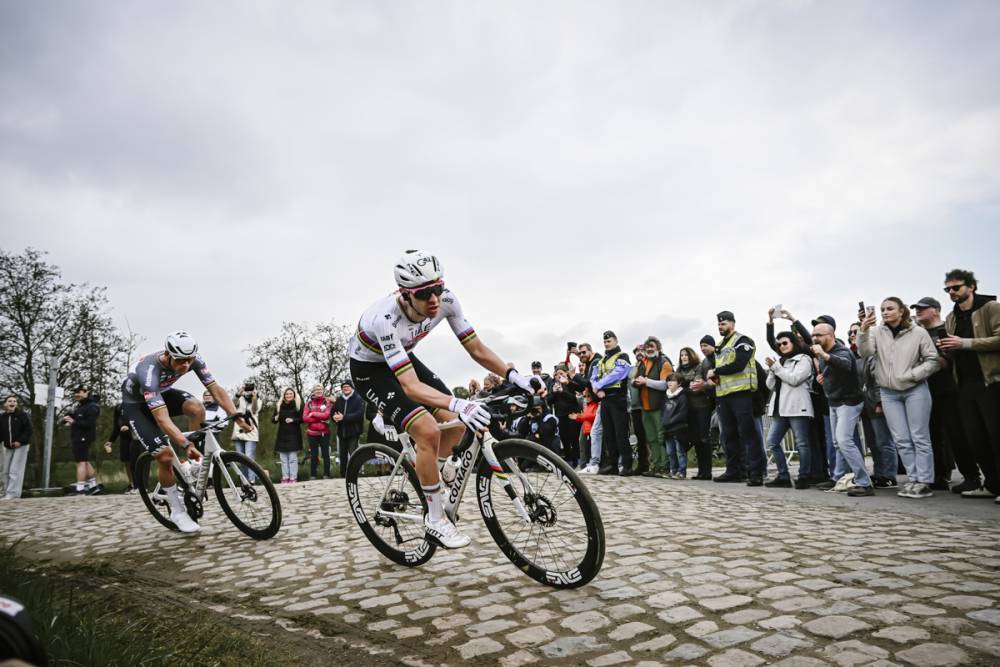
Disaster Strikes: Pogačar’s Crucial Mistake
That miracle nearly came. At sector 9 — Pont-Thibault to Ennevelin — Pogačar, full gas, misjudged a sweeping right-hander. In a flash, his rear wheel lost grip and he hit the deck.
“I was focused on following the motorbikes. I didn’t even see the corner,” a visibly deflated Pogačar admitted afterward. “The crash cost me my rhythm, and then my front brake started touching the wheel. Mentally, I just cracked a little.”
Though he remounted quickly, the damage was done. Van der Poel rode out of the sector 20 seconds ahead and never looked back.
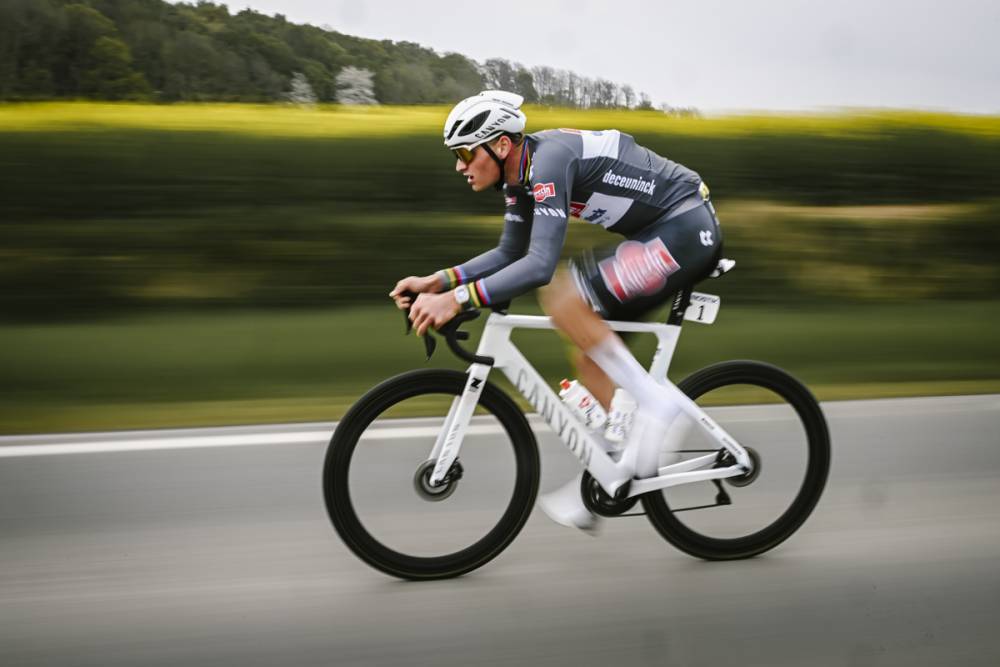
The Final Blow: Van der Poel Rides into Legend
Even a puncture on the Carrefour de l’Arbre — one of the race’s final and fiercest sectors — couldn’t stop Van der Poel. His buffer over Pogačar, now over 50 seconds, was unassailable. With every turn of the pedal, he carved his legacy into the stones.
He entered the Roubaix Velodrome alone, greeted by a thunderous ovation. A third consecutive title. A monument to his mastery.
Behind, the battle for third heated up. The trio of Vermeersch, Pedersen, and Van Aert broke clear on Bourghelles to Wannehain. It was Pedersen who out-sprinted the Belgians to claim his second straight third-place finish — a testament to his gritted-teeth resilience after a poorly-timed puncture.
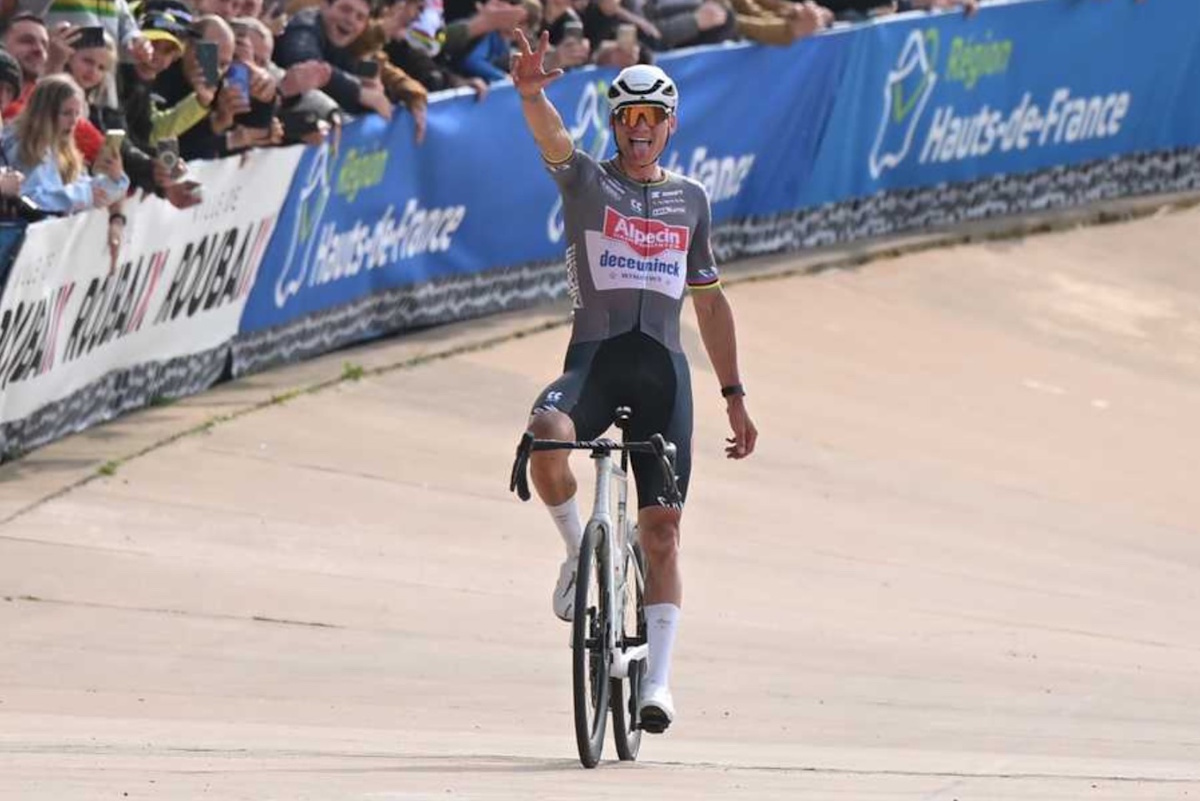
Tactical Analysis: Why Van der Poel Won
Mathieu van der Poel’s triumph at the 2025 Paris-Roubaix was a masterclass in seizing opportunity and executing under pressure. The race took a dramatic turn earlier than expected when Tadej Pogačar crashed while trying to follow a motorbike into a corner he failed to anticipate. Van der Poel, riding near the front, narrowly avoided the crash and immediately committed to an aggressive move. With over 50 kilometers still to race, his decision to press on solo was bold, but it capitalized on the disruption behind and created a gap that would never be closed. From that moment, he was fully committed, battling headwinds across the cobbled sectors while the chasers scrambled to reorganize.
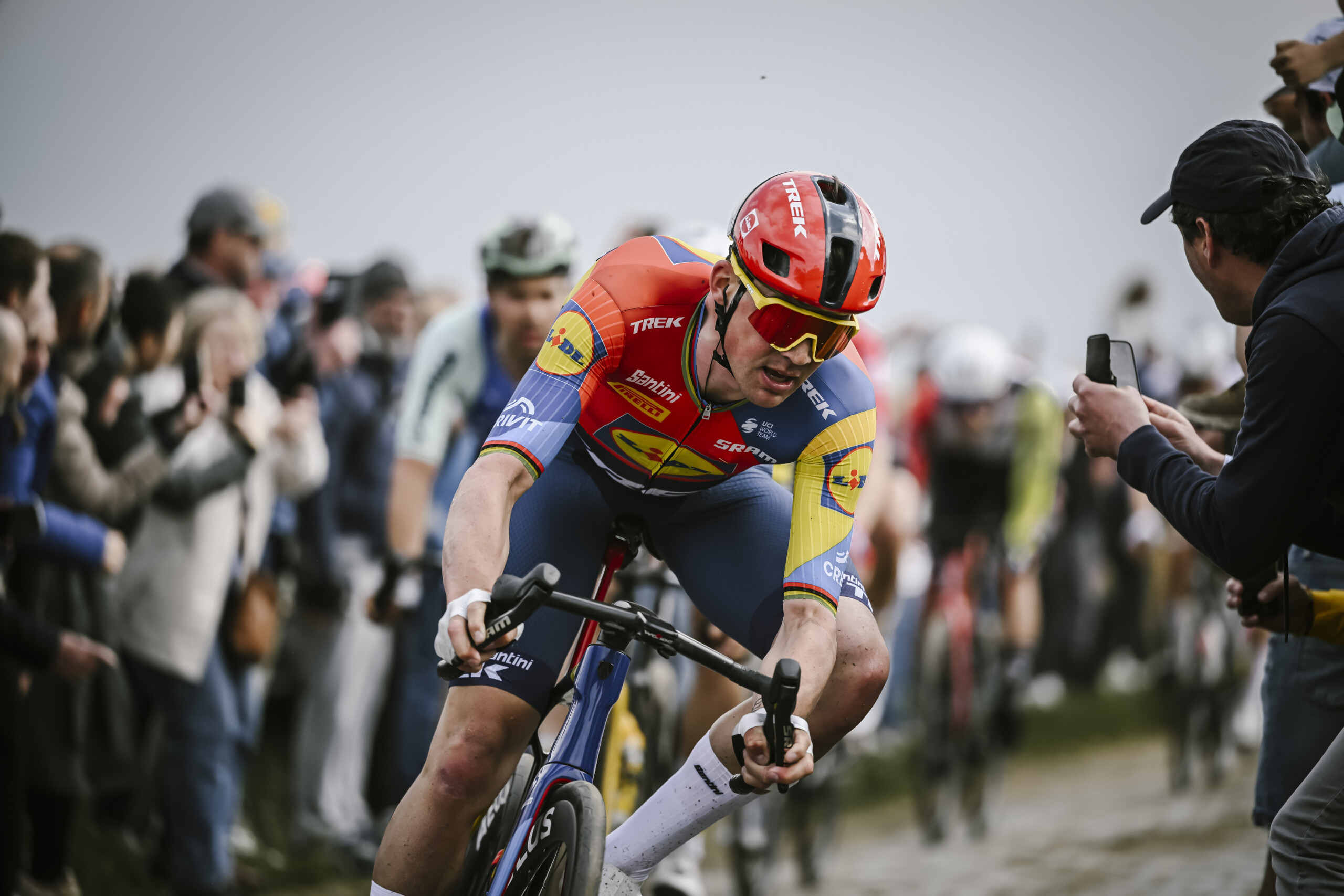
Among those affected was Mads Pedersen, who had been well-protected by his Lidl-Trek team and positioned perfectly for the finale. A puncture at a critical moment took him out of contention for the win, turning his race into a salvage operation. Despite this, he and his team showed remarkable resilience, regrouping and ultimately riding their way back onto the podium. Pogačar, meanwhile, attempted to recover from his crash but was hampered by a mechanical issue and eventually a bike change. Although he was physically strong, the incident and ensuing frustrations sapped his momentum, and he was unable to rejoin the leaders.
With the key contenders neutralized or delayed, Van der Poel controlled the race from the front. While the gap hovered within sight for a while, no organized chase materialized behind him. His sustained effort in difficult conditions was a clear demonstration of strength and tactical clarity. He managed the final kilometers with discipline, never overextending yet maintaining enough power to keep the chasers at bay. His third win in Roubaix confirmed not only his dominance on the cobbles but also his ability to read and react to the chaos that defines this race. In a race where luck, timing, and toughness intersect, Van der Poel had the perfect combination—and made no mistakes.
Post-Race Reflections
Mathieu van der Poel’s third victory at Paris-Roubaix was as much a test of endurance as it was a triumph of timing and resilience. “It has been the Roubaix I’ve suffered the most in my career,” he admitted, underscoring just how brutal the 2025 edition truly was. What made this win even more remarkable was how early the decisive move came: “I was not expecting to go clear that early.”
The turning point came when Tadej Pogačar crashed after misjudging a corner—a moment Van der Poel narrowly escaped: “Tadej misjudged a corner and I was quick enough to save it. That’s part of racing.” With the chaos behind him, he pressed on solo, facing brutal headwinds across the cobbles: “I struggled… but I gave everything I had all the way to the finish.” It wasn’t a comfortable ride, but it was a commanding one.
Despite racing alone for much of the finale, Van der Poel showed nothing but admiration for his rivals: “Tadej is an amazing champion… Had he not made a mistake, we probably would have made it together to the velodrome.” The respect was mutual, and it adds weight to Van der Poel’s achievement. There was no sense of vengeance after Flanders—just relief and satisfaction: “I’m just happy to find my good legs again.”
Cementing his legacy with a third win in Roubaix, Van der Poel reflected on how far he’s come: “This is something you don’t expect when you start racing, because this is a race in which legs count as much as luck does.” It was a brutal day, but a historic one—another Roubaix to remember for a rider who continues to etch his name deeper into cycling history.
Tadej Pogačar’s Paris-Roubaix debut was as eventful as it was humbling, marked by a crash, a mechanical issue, and a gritty fight to the finish. As he put it bluntly: “Shit happens.” Pogačar crashed while trying to follow the motorbikes into a corner he didn’t see in time: “I just didn’t see the corner coming, and couldn’t brake in time to avoid crashing.” It was a moment of bad luck that proved costly, especially when compounded by a brake issue.
Despite his reputation for resilience, even Pogačar admitted the crash and mechanical wore on him mentally and physically: “By the time I changed bikes, I had already exploded and was just hoping to reach the finish line as quickly as possible.” But he never fully gave in, and his reflections afterward showed both disappointment and perspective.
There’s a strong chance he’ll return: “I may come back to Paris-Roubaix next year,” he said, noting how much he enjoyed the unique atmosphere and support: “I liked the atmosphere, with an amazing amount of people on the roadside. It was a great day of racing.” For Pogačar, it wasn’t just about his individual ride—he also praised his team’s performance: “Today’s was a great race for our team, with 2 guys in the final top 5.”
He also gave credit where it was due, highlighting the strength of his rivals: “Mathieu [van der Poel] was the strongest in the cobbles and rode incredibly well… He is a great champion… If I was a kid, he would be my idol.” That admiration underscores Pogačar’s respect for the classics and his competitors—and hints at unfinished business.
While this year didn’t go his way, his words make one thing clear: his Roubaix story isn’t over.
Mads Pedersen’s performance in the race was defined by resilience and sharp tactical thinking, even in the face of misfortune. As he explained, “I was unlucky to puncture in a really bad moment”—a pivotal incident that derailed his shot at directly contesting for the win. Up to that point, things were unfolding well: “I was feeling really good… The team did impressive work to keep me out of trouble, positioning me ahead of every sector.” That strong team support had him exactly where he needed to be—until the puncture changed everything.
Rather than giving up, Pedersen and his team made a mental shift: “When the race is gone like it was, you need to get your head ready to fight for something else.” That ability to recalibrate mid-race, to pivot from disappointment to opportunity, became the story of his ride. Despite being out of podium contention in that moment, he remained committed: “We kept fighting… because anything can happen in this race.”
Ultimately, that mindset paid dividends. His persistence earned him a spot on the podium, a result that reflects not just physical strength, but strategic composure and grit: “In the end, it paid off.”
Pedersen may not have had the legs to dominate the race, but his response to adversity turned a potential disaster into a commendable success.
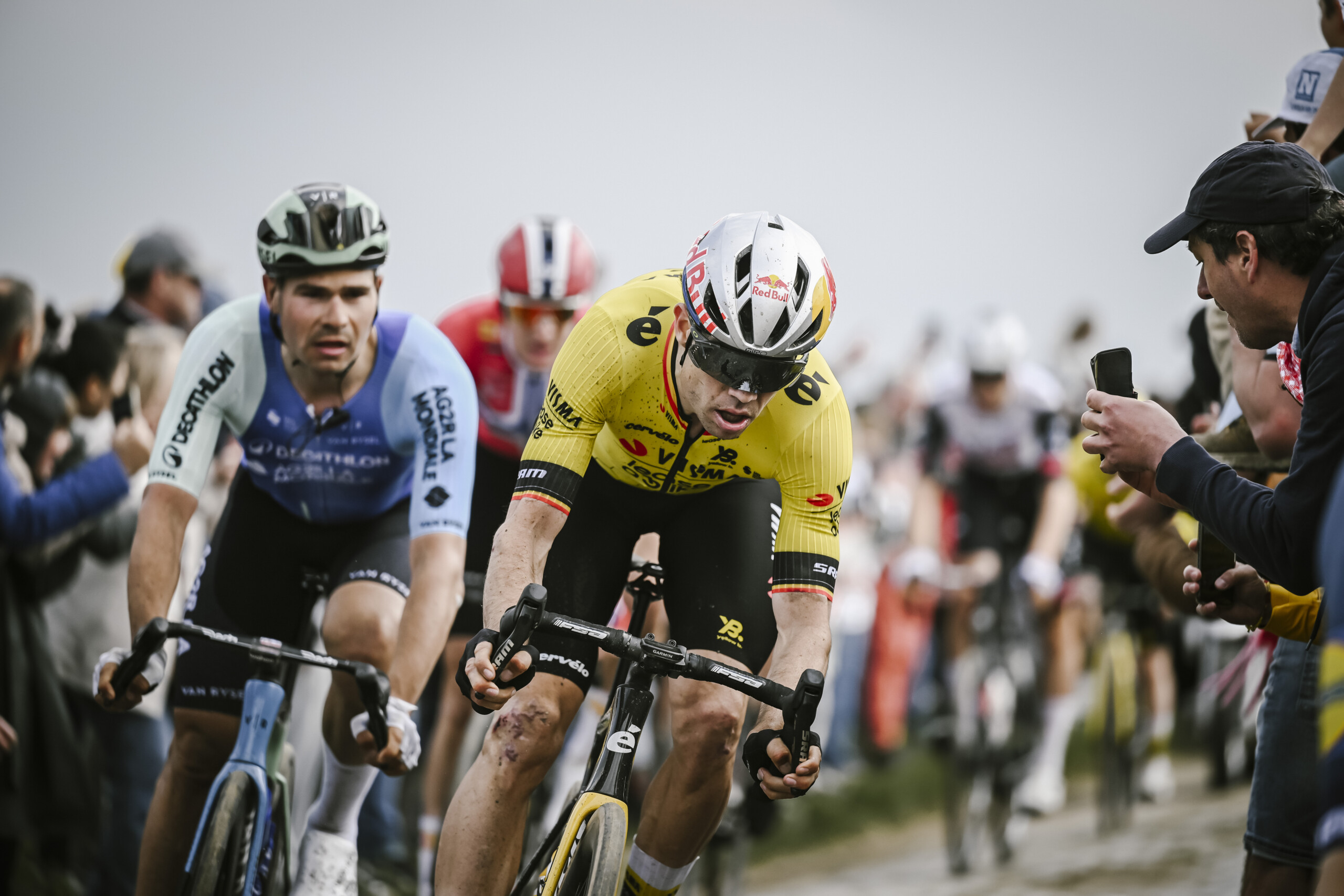
Despite an early crash, Wout van Aert showed resilience and determination at this year’s Paris-Roubaix, ultimately finishing fourth behind Mathieu van der Poel, Tadej Pogacar, and Mads Pedersen. For the Belgian rider, just being in contention for a podium spot felt like an unexpected success.
The Visma-Lease a Bike leader suffered a fall just before the first cobbled sector, a moment that immediately put him on the back foot. “It’s difficult,” van Aert said post-race. “I crashed just before the first cobbled sector, and from that point on, you’re already behind. I struggled to find my rhythm, but with the team, we fought hard to get back into the race.”
By the time the peloton reached the infamous Trouée d’Arenberg, van Aert had managed to position himself well, though he admitted he didn’t have the legs to follow the day’s strongest riders. Still, he was surprised to remain in contention deep into the race. “It’s almost a surprise to still be fighting for the podium in the finale,” he said.
Observers noted that van Aert seemed to grow stronger as the race progressed—similar to his performance at the Tour of Flanders. But the Belgian was cautious in his assessment. “Maybe, but it’s still too early to really analyze that. I’m happy with fourth place. I think it was the best result I could’ve achieved today.”
Van Aert now wraps up his cobbled classics campaign with two fourth-place finishes: one in Roubaix, the other in the Tour of Flanders. While those are respectable results, they fell short of the team’s main objective. “Of course, we hoped for more. The goal was to win a race,” he admitted. “But looking back, I was always beaten by stronger riders. I gave it everything, so I have no regrets.”
Legacy in Motion
With this victory, Van der Poel ties Pogačar at eight Monument wins — both now sitting in sixth and seventh on the all-time list, at the ages of 30 and 26, respectively. The duel between the two superstars is still unfolding, but with each race, they continue to redraw the boundaries of what’s possible.
And Paris-Roubaix, that most brutal of canvases, once again proved the perfect stage for history.
Van der Poel now stands at the crossroads of greatness and myth. Three cobblestones pave his path to legend — and the road ahead looks boundless.
| RANK | RIDER | RIDER NO. | TEAM | TIMES | GAP |
| 1 | MATHIEU VAN DER POEL | 1 | ALPECIN-DECEUNINCK | 05H 31′ 27” | – |
| 2 | TADEJ POGACAR | 21 | UAE TEAM EMIRATES XRG | 05H 32′ 45” | + 00H 01′ 18” |
| 3 | MADS PEDERSEN | 11 | LIDL-TREK | 05H 33′ 38” | + 00H 02′ 11” |
| 4 | WOUT VAN AERT | 36 | TEAM VISMA | LEASE A BIKE | 05H 33′ 38” | + 00H 02′ 11” |
| 5 | FLORIAN VERMEERSCH | 26 | UAE TEAM EMIRATES XRG | 05H 33′ 38” | + 00H 02′ 11” |
| 6 | JONAS RUTSCH | 144 | INTERMARCHÉ – WANTY | 05H 35′ 13” | + 00H 03′ 46” |
| 7 | STEFAN BISSEGGER | 71 | DECATHLON AG2R LA MONDIALE TEAM | 05H 35′ 13” | + 00H 03′ 46” |
| 8 | MARKUS HOELGAARD | 83 | UNO-X MOBILITY | 05H 35′ 13” | + 00H 03′ 46” |
| 9 | ALFRED WRIGHT | 137 | BAHRAIN VICTORIOUS | 05H 36′ 02” | + 00H 04′ 35” |
| 10 | LAURENZ REX | 143 | INTERMARCHÉ – WANTY | 05H 36′ 03” | + 00H 04′ 36” |





